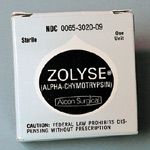Article
Cataract surgery evolves over 30-year history
Ophthalmology Times is celebrating its 30th anniversary this month. Let's look at the evolution that has occurred during these 30 years to the most common intraocular operation performed by ophthalmologists: the cataract extraction.

In 1972, when I completed my residency, intracapsular cataract extraction was the cataract procedure used most commonly and was done by cryoextraction, using alpha-chymotrypsin to weaken the amino acid bonds of the zonules (Joaquin Barraquer, 1957). Most often a peripheral iridectomy or sector iridectomy was also performed to lessen the potential of pupillary block caused by an intact vitreous face. Tumbling or sliding techniques also were used, but their popularity was failing because of the success of cryoextraction.

IOLs

IOL use in the United States was slowly growing because many of the surgeons were traveling to these foreign centers to learn the IOL techniques. In the early 1970s iris-fixated lenses were the standard, and anterior-chamber IOLs had some strong proponents. Extracapsular cataract extraction (ECCE), either by phacoemulsification or traditional larger sections, was making a small inroad.

Remember that in the early days of IOLs, there were no viscoelastics, and air bubbles coupled with great care were the standard requirements by the implant surgeon for all IOL implantations. If the iris-clip IOL dislocated, you either removed it or used a variety of gymnastic techniques to move the IOL into the proper position. An ingenious technique also was developed to fixate the IOL to the iris by using a suture placed in the eye without opening the eye. This technique, the McCannell suture, is still used today.
Newsletter
Don’t miss out—get Ophthalmology Times updates on the latest clinical advancements and expert interviews, straight to your inbox.




